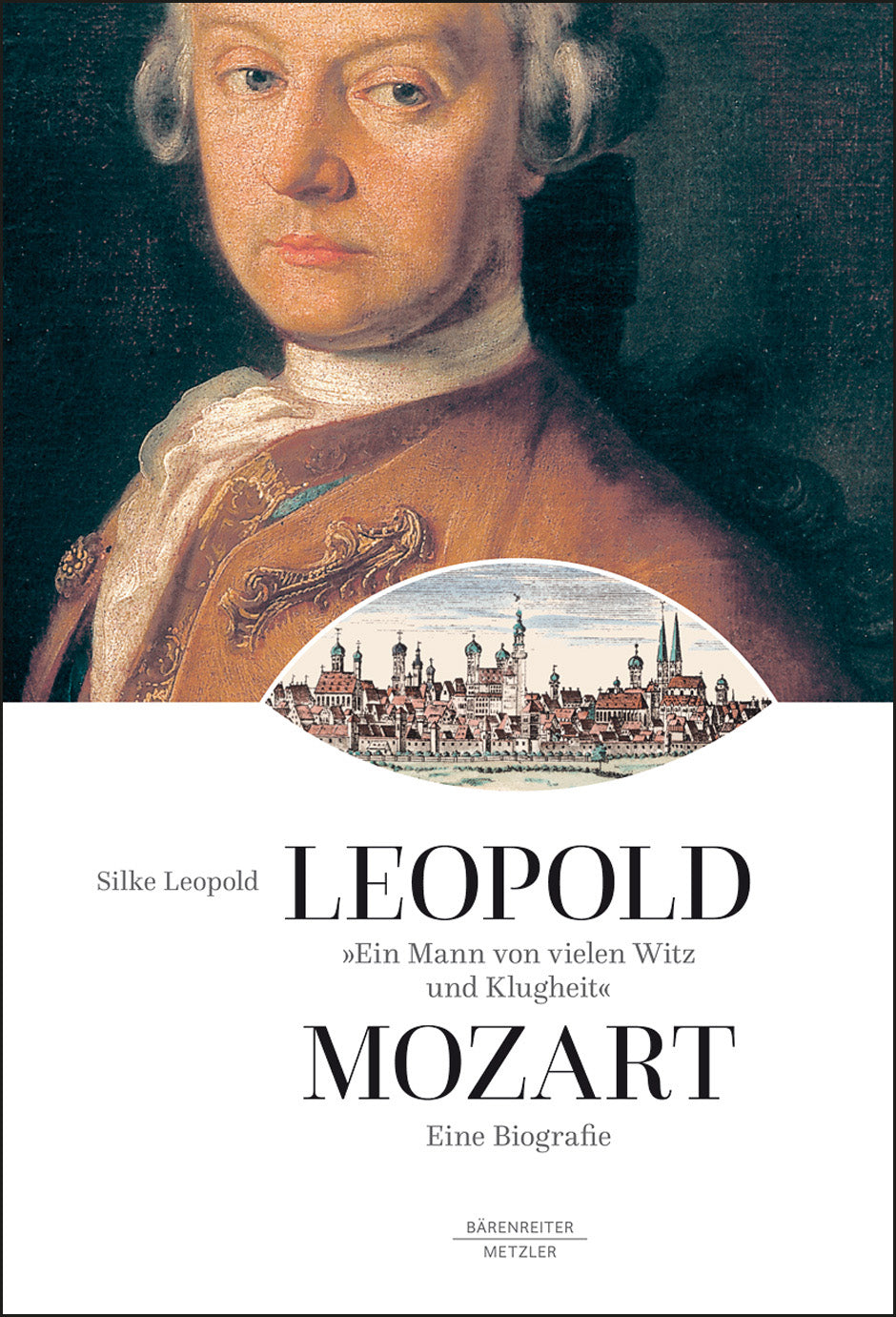Leopold Mozart: Ein Mann von vielen Witz and Klugheit
Eine Biografie
In stock and typically ships within 1 business day.
- Author: Silke Leopold
- Binding: Hardcover
- Language: German
- ISBN:
- Size: 6.7 x 9.4 inches
- Pages: 280
Was wüssten wir heute von Leopold Mozart, wenn er nicht der Vater seines Sohnes gewesen wäre? Sein rechtswissenschaftliches Studium hatte er abgebrochen, er wurde Kammerdiener and Musiker, schaffte es aber nie nach ganz oben, als Autor der vielgelesenen „Gründlichen Violinschule" erlangte er schließlich einige Bekanntheit: Leopold Mozart würde ohne seinen Sohn wohl in der Masse der vielen Musiker seiner Zeit untergehen. Die Frage kann aber auch andersherum gestellt werden: Was wäre aus Wolfgangus Theophilus geworden, wenn er einen anderen Lehrmeister gehabt hätte? Wenn der Vater nicht die Jahrhundertbegabung dieses Kindes erkannt and sein Leben fortan der Förderung seines Sohnes gewidmet hätte? Und natürlich ist Leopold Mozart viel mehr als nur der Vater seines Sohnes. Davon erzählt diese Biografie zum 300. Jubiläum. Am 14. November 1719 wurde Leopold Mozart hineingeboren in eine Zeit, in der die alten Herrschaftsverhältnisse and konfessionellen Schranken ebenso beharrlich verteidigt wurden wie sie brüchig geworden waren.
Leopold Mozart verstand sich als ein Mittler zwischen den Welten – ein Jesuitenschüler, der mit Protestanten Freundschaften schloss, ein Bürgersohn, der dem Adel diente, ein Geiger, der als Schriftsteller zu reüssieren hoffte. Und er war ein Mann, der mit offenen Augen durch die Welt reiste, voller Neugier auf alles: auf Religion and Medizin, auf Esskultur and Trinkgewohnheiten, auf Mode and Hygiene, auf Landschaft and Klima and vor allem auf die Menschen, die ihm begegnet sind. in Briefen offenbart sich Persönliches and Familiäres; sie sind darüber hinaus eine Fundgrube zu Lebenswelt and Alltagsgeschichte seiner Zeit. Über sechzig farbige Abbildungen machen diese Zeit anschaulich and lassen den Leser eintauchen in Mozarts Welt.
Die Autorin Silke Leopold studierte Musikwissenschaft, Theaterwissenschaft, Romanistik and Literaturwissenschaft in Hamburg and Rom. Sie lehrte an verschiedenen Universitäten and Hochschulen, zuletzt bis zu ihrer Emeritierung 2014 in Heidelberg. Zu ihren Forschungsschwerpunkten zählen die Geschichte der Oper, die italienische Musik des 16. bis 18. Jahrhunderts sowie Studien zu Monteverdi, Händel and Wolfgang Amadeus Mozart. Sie ist u. a. Mitglied in der Akademie für Mozartforschung der Stiftung Mozarteum Salzburg and wurde 2019 mit dem Händel-Preis 2019 der Stadt Halle ausgezeichnet. Als Autorin and Herausgeberin hat sie zahlreiche Veröffentlichungen vorgelegt, darunter „Händel. Die Opern", „Verdi. La Traviata" and das „Mozart-Handbuch".
Publishers use a lot of words to describe what they sell, and we know it can be confusing. We've tried to be as clear as possible to make sure you get exactly what you are looking for. Below are descriptions of the terms that we use to describe the various formats that music often comes in.
Choral Score
A score for vocalists that only contains the vocal lines. The instrumental parts are not there for reference. Generally, cheaper than a vocal score and requires multiple copies for purchase.
Facsimile
Reproductions of the original hand-written scores from the composer.
Full Score
For ensemble music, this indicates that the edition contains all parts on a single system (there are not separate parts for each player). In larger ensembles, this is for the conductor.
Hardcover
Hardbound. Generally either linen-covered or half-leather.
Orchestral Parts
Similar to a wind set, this is a collection of parts. In the case of strings, the numbers listed are the number of copies included, though generally these are available individually (often with minimum quantities required).
Paperback
When publishers offer multiple bindings (e.g. hardcover) or study scores, this is the "standard" version. If you're planning to play the music, this is probably what you want.
Performance / Playing Score
A score of the music containing all parts on one system, intended for players to share. There are not separate parts for each player.
Set of Parts
For ensemble music, this indicates that there are separate individual parts for each player.
Solo Part with Piano Reduction
For solo pieces with orchestra, this is a version that contains a piano reduction of the orchestra parts. For piano pieces, two copies are typically needed for performance.
Study Score
A small (think choral size) copy of the complete score meant for studying, and not playing. They make great add-ons when learning concertos and small chamber works.
Vocal Score
A score prepared for vocalists that includes the piano/organ part or a reduction of the instrumental parts.
Wind Set
For orchestral music, this is a collection of wind and percussion parts. The specific quantities of each instrument are notated.
With Audio
In addition to the printed music, the edition contains recordings of the pieces. This may be an included CD, or access to files on the internet.
With / Without Fingering (Markings)
Some publishers prepare two copies - a pure Urtext edition that includes no fingering (or bowing) suggestions and a lightly edited version that includes a minimal number of editorial markings.



